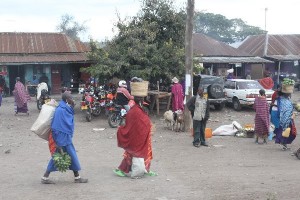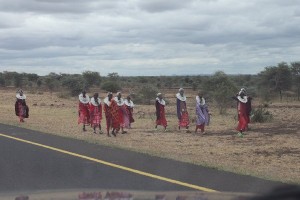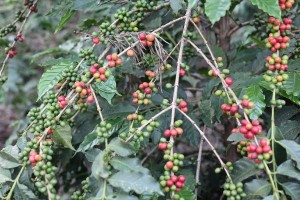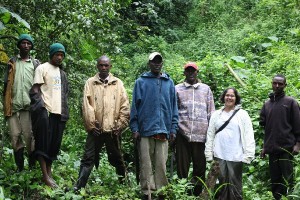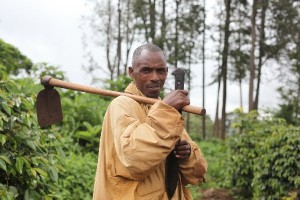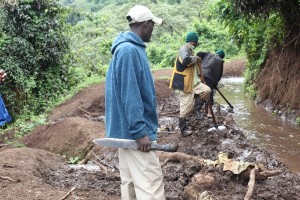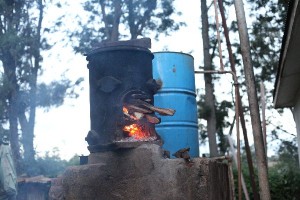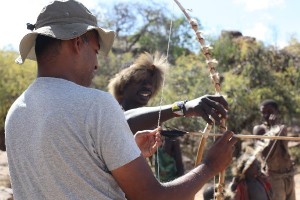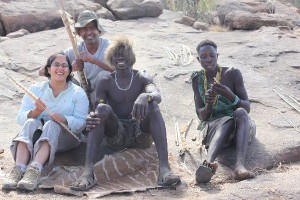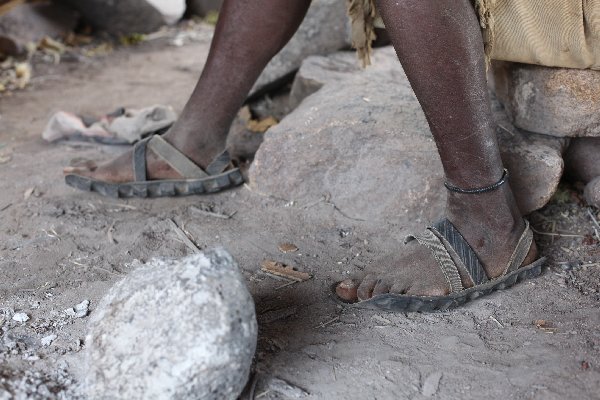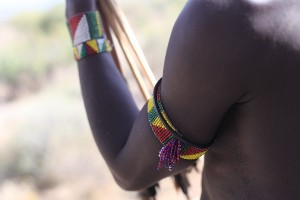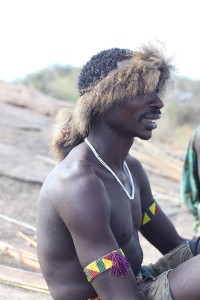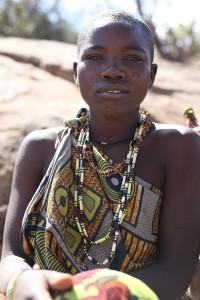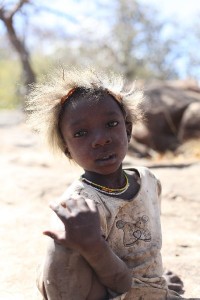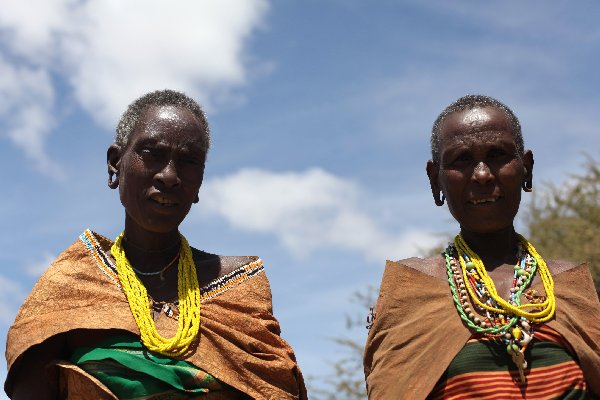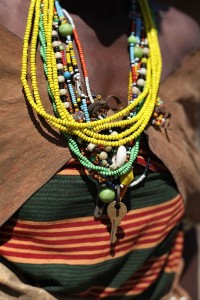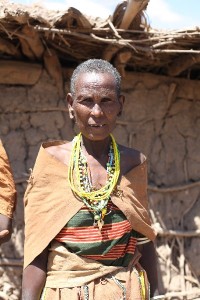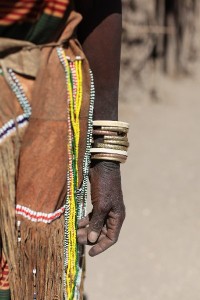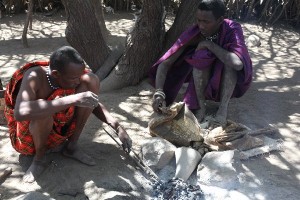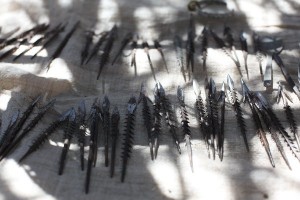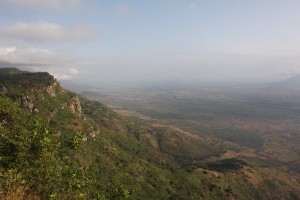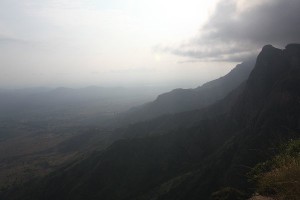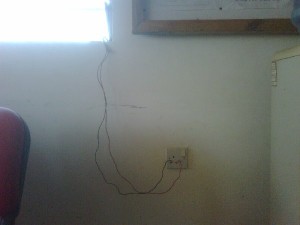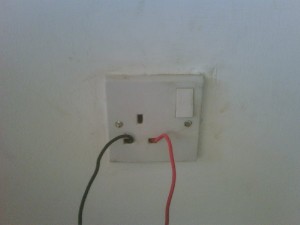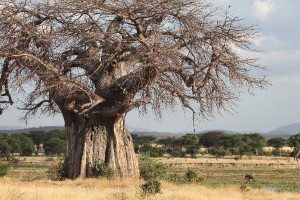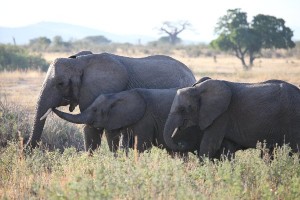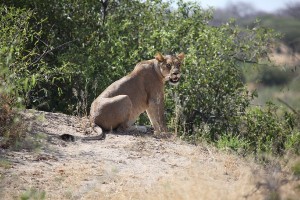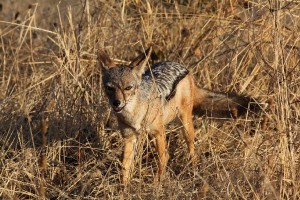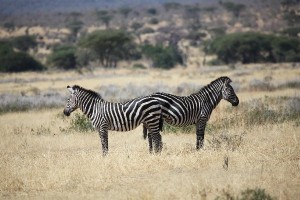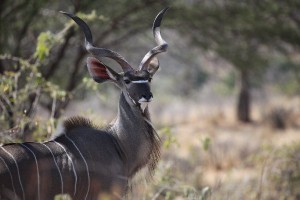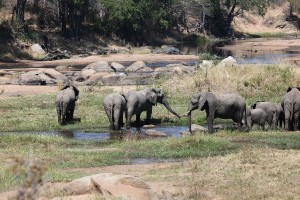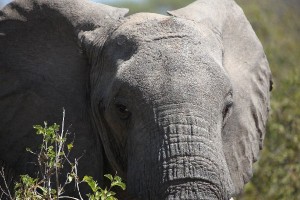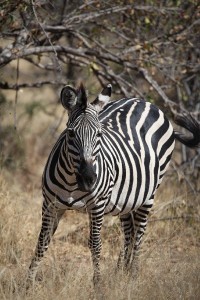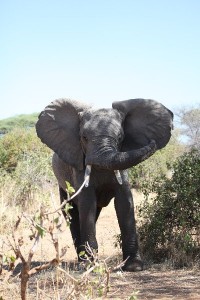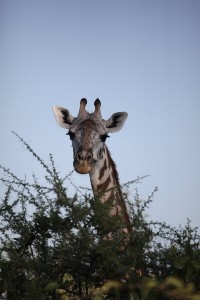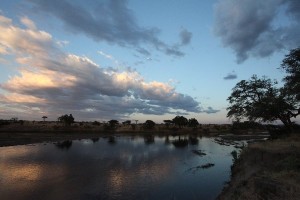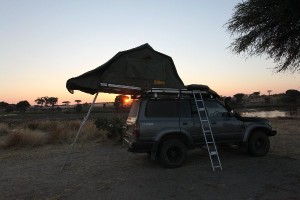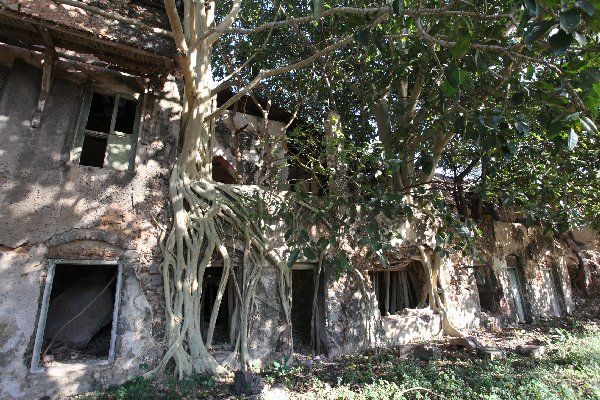The Tanzanian traffic police have been unexpectedly friendly. We were expecting to be stopped for bribes (or rather a request for “a soda”, the more discreet way of asking) many times. The occasions we were stopped, the conversation on where we’ve come from and were going to was very polite. Ven was even able to sweet talk his way out of a speeding fine: “we like your country so much, we have such wonderful memories and it would be a shame if this was one of our last ones….” etc etc…
Perhaps there’s a policy of not hassling the tourists driving through. Instead of leaving them with a bad impression by taking a few dollars here and there in bribes on the roads, Tanzania has increased the national park fees and is now ‘officially’ extracting more money from us than ever before! This includes $200 to take your vehicle into the Ngorogoro Crater on poorly maintained roads, $50 per person per day entrance fee, and $50 per person per night to camp at a site that has a pit latrine if you’re lucky! As a result, we decided to have an off-the beaten track trip around Tanzania.
Tanzania comes a close second to Kenya in terms of how many times we entered and exited it. Our first trip involved more Shah hospitality, with our friend’s father inviting us to spend a few days on his coffee farm on the edge of the Ngorogoro Conservation Area and not far from Lake Manyara. The setting was breathtaking and quite remote, with coffee and other crops like maize as far as the eye could see. As you walk around though, you can see the damage done to the crops by the night time strolls of the elephants – who needs to pay crater fees when you have animals on your doorstep! We also loved the wood burner that heated up the water for our shower!
Mr Shah suggested we go on the ‘Jungle Walk’ one morning and he would get someone to show us the way. We had expected a few directions and off we would go. Instead we got 6 farm workers armed with machetes and shovels ready to lead us! Only a few hundred metres into the walk we realised why they were needed, and why this was called the Jungle Walk. We brought up the rear as they hacked through the bushes to reveal a path that had been covered with overgrown trees. They worked as a team as they moved along, in single file. The first guy would clear the main overhanging branch with a single swipe and walk on, the next would swiftly cut a few more of the smaller branches and walk on, the third would start clearing at ground level, and so on, until there was a relatively clear path for us to walk along! The path clearing needed to be done anyway in order to access and unblock the irrigation channels to the farms, and the arrival of guests was a good excuse to do it that day!
From the farm we also visited Lake Eyasi, where the Hadzabe bushmen still live traditional hunter gatherer lifestyles. The trickle of tourism in that area brings them some money to buy things from villages if needed. A guide takes you to where they are that day, and if you arrive really early in the morning you can even go hunting with them. It was interesting seeing them dry the meat of a baboon they had caught earlier (we declined the offer of trying some), and great fun being taught how to use a bow and arrow. We later visited one of the families who make the arrowheads out of scrap metal, such as from padlocks. The chief’s head gear and foot wear were also quite interesting!
Also in Northern Tanzania we headed into the Usumbara Mountains and the dramatically situated village of Lushoto. Great views from our camping spot! There are lots of live chickens being sold on the side of the road and boys dangle them in front of you as you pass by. Sensibly, the boys here see a foreign car and turn away, clearly realising we would not have a clue what to do with one!
Going south, towards Ruaha National Park, we had the misfortune of having to pass through Dodoma, the administrative capital of Tanzania. There’s a couple of tar roads, taking government ministers from their upmarket hotel in their new shiny 4x4s straight to Parliament in comfort. The rest of the roads are dirt tracks with drainage ditches running along the sides where bicycles, people, cars and goats collect. We’ve yet to come across a more shabby capital. The Ditches of Dodoma claimed us as yet another victim, and as the locals heaved us out we were thinking how lucky we were that we went down a shallow slope rather than one of the more steep ones!
Sitting at the repair workshop was like being in detention at school with a seemingly endless wait for the repairs to be done, though we did see some ingenious wiring take place when there was a power cut. And we did come across some interesting characters in the waiting room, including a Chinese construction worker who was about to start tarring the road where we were going next, and a Masaai man with shoes made from a strip of old tyre held onto his feet by string, just like the bushmen in Lake Eyasi. We never did find out what he was there for. Was he after new tyres as his treads were wearing thin? Who knows.
We were told that there are two routes from Dodoma to Iringa, further south. The shorter dirt road (2.5 hours) and the longer tar road (5-6 hours). For us, that probably meant 4 hours vs 8 hours. We opted for the ‘shorter’ dirt road, but 8 long and dusty hours later we were wishing we had taken the ‘longer’ tar road as yet more bits of our car had shaken loose or fallen off. It may sound ridiculous, but really, we just didn’t hear the side step fall off at all!
Our one dip into Tanzania’s National Parks was Ruaha, a slightly wild, little visited park with all the game you could hope for by a pretty river setting. Instead of the 20+ cars you see next to every animal in the Serengeti and Ngorogoro, we saw a total of 4 cars and lots of game in the 2 days we were there. Lovely.
Always up for a challenge, we decided to head the more remote areas of southern Tanzania and northern Mozambique. Random hotels kindly let us camp in their courtyards. And in Lindi we came across a beautiful crumbling building being taken over by the trees. Our next decision was whether to drive inland and go over the Unity Bridge to Mozambique, or strap our car to 3 canoes and take a shorter route across the river……

